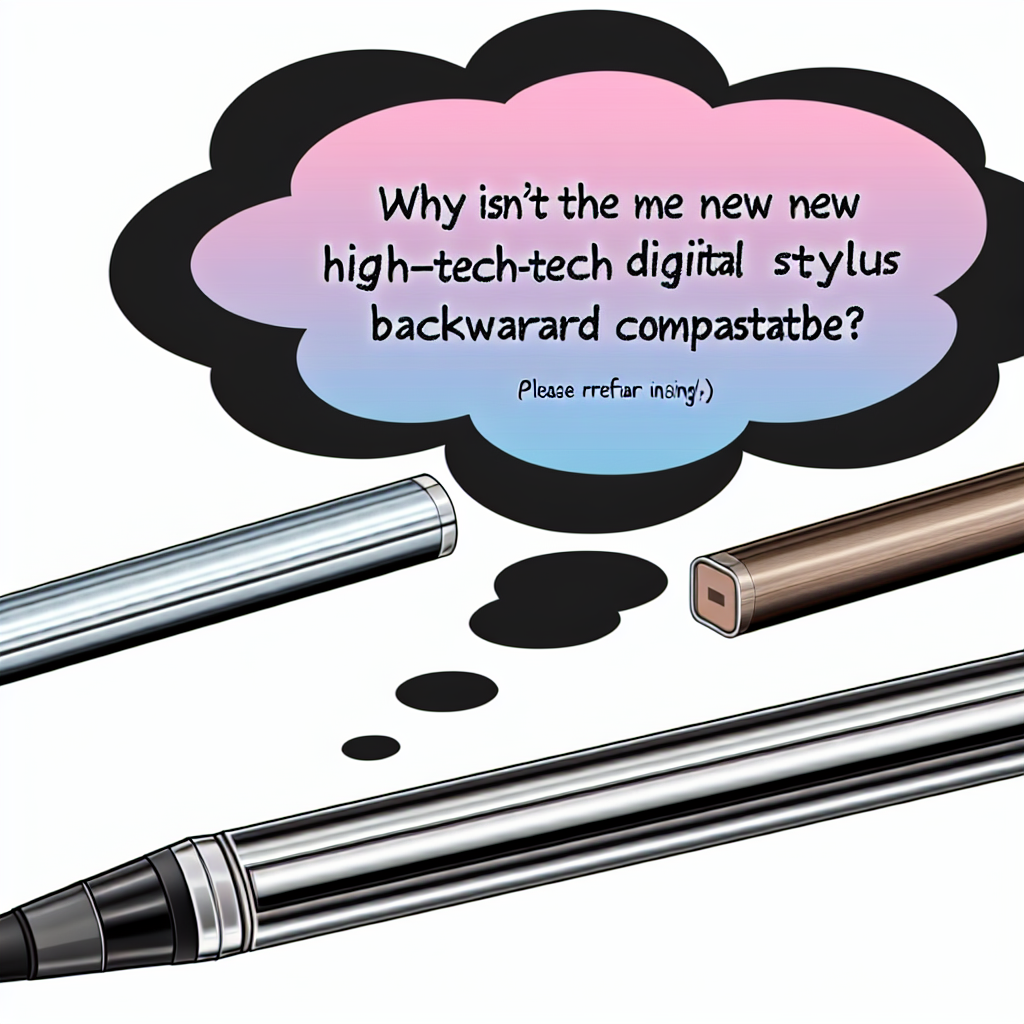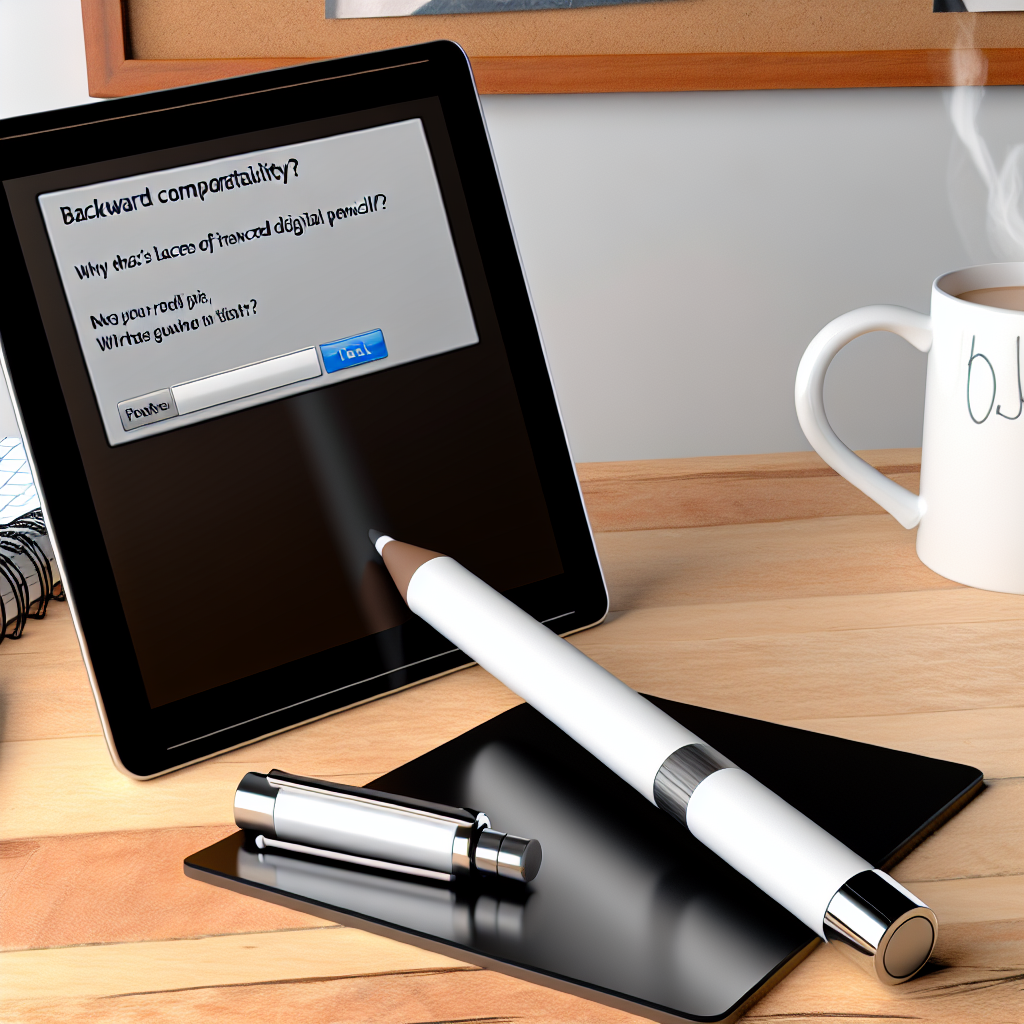The Evolution of Apple Pencil: A Look at Previous Generations and Their Compatibility
The Apple Pencil has become an essential tool for many artists, designers, and note-takers. With its precise and responsive stylus, it has revolutionized the way we interact with our iPads. However, with the release of the new Apple Pencil Pro, some users were disappointed to learn that it is not backward compatible with older iPad models. In this article, we will take a closer look at the evolution of the Apple Pencil and explore why the new Pro version lacks backward compatibility.
To understand why the new Apple Pencil Pro is not backward compatible, it is important to examine the previous generations of the Apple Pencil and their compatibility. The first-generation Apple Pencil was introduced in 2015 alongside the iPad Pro. It featured a lightning connector that allowed it to be directly plugged into the iPad for charging and pairing. This design, however, limited its compatibility to only the iPad Pro models.
In 2018, Apple released the second-generation Apple Pencil, which addressed some of the limitations of its predecessor. This new version featured a sleeker design and introduced a magnetic attachment system that allowed it to be wirelessly charged and paired with the iPad Pro. This innovation not only made the charging process more convenient but also eliminated the need for the lightning connector, making it compatible with a wider range of iPad models.
With the release of the new Apple Pencil Pro, users were expecting even greater compatibility. However, Apple made the decision to make it exclusively compatible with the latest iPad Pro models. This decision has left many users wondering why Apple chose to limit the backward compatibility of the new Apple Pencil Pro.
One possible reason for this lack of backward compatibility is the technological advancements that the new Apple Pencil Pro brings. The Pro version boasts improved pressure sensitivity, reduced latency, and enhanced palm rejection. These advancements may require specific hardware and software capabilities that are only available in the latest iPad Pro models. By limiting compatibility to these models, Apple ensures that users can fully experience the new features and capabilities of the Apple Pencil Pro.
Another reason for the lack of backward compatibility could be Apple’s strategy to encourage users to upgrade to the latest iPad Pro models. By making the new Apple Pencil Pro exclusive to these models, Apple creates an incentive for users to invest in the latest technology. This strategy not only drives sales of the iPad Pro but also ensures that users have the best possible experience with the Apple Pencil Pro.
While the lack of backward compatibility may disappoint some users, it is important to remember that technological advancements often come with trade-offs. The new Apple Pencil Pro offers a range of exciting features and capabilities that may not be possible with older iPad models. By focusing on compatibility with the latest technology, Apple can push the boundaries of what is possible with the Apple Pencil.
In conclusion, the new Apple Pencil Pro’s lack of backward compatibility may be disappointing for some users. However, it is important to understand that this decision is likely driven by technological advancements and Apple’s strategy to encourage users to upgrade to the latest iPad Pro models. While it may limit compatibility, it also ensures that users can fully experience the new features and capabilities of the Apple Pencil Pro. As technology continues to evolve, it is inevitable that some devices will become incompatible with older models.
Exploring the Technical Limitations of Backward Compatibility for Apple Pencil Pro

C’mon, Why Isn’t the New Apple Pencil Pro Backward Compatible?
Apple has always been known for its innovation and cutting-edge technology. With each new product release, consumers eagerly anticipate the latest features and improvements. However, there is one aspect of Apple’s latest release, the Apple Pencil Pro, that has left many scratching their heads – its lack of backward compatibility.
The Apple Pencil Pro is a remarkable tool that offers enhanced precision and functionality for artists, designers, and note-takers alike. Its sleek design and improved performance have garnered praise from professionals in various fields. However, the inability to use the Apple Pencil Pro with older iPad models has raised questions and concerns among Apple enthusiasts.
To understand why the Apple Pencil Pro is not backward compatible, we must delve into the technical limitations that come into play. The new Apple Pencil Pro utilizes a different charging mechanism and connectivity method compared to its predecessor, the Apple Pencil 2. This change in technology is the primary reason for the lack of backward compatibility.
The Apple Pencil Pro features a built-in wireless charging system that allows it to charge magnetically when attached to the side of the iPad Pro. This innovative charging method eliminates the need for a physical Lightning connector, which was present on the previous Apple Pencil models. The absence of a Lightning connector means that older iPad models, which rely on this connector for charging and connectivity, cannot support the Apple Pencil Pro.
Furthermore, the Apple Pencil Pro utilizes a new connectivity protocol called Bluetooth Low Energy (BLE) for pairing and communication with the iPad Pro. This protocol offers improved power efficiency and faster response times compared to the previous Bluetooth technology used in the Apple Pencil 2. However, older iPad models do not support BLE, making it impossible for them to establish a connection with the Apple Pencil Pro.
While it may be disappointing for owners of older iPad models, it is important to understand that technological advancements often come with trade-offs. Apple’s decision to introduce a new charging mechanism and connectivity protocol for the Apple Pencil Pro was driven by the desire to enhance user experience and improve overall performance.
Moreover, backward compatibility can sometimes limit the potential for innovation. By designing the Apple Pencil Pro exclusively for the latest iPad Pro models, Apple was able to optimize its performance and take full advantage of the hardware capabilities of these devices. This approach allows for a more seamless and immersive user experience, which is crucial for professionals who rely on the Apple Pencil Pro for their work.
In conclusion, the lack of backward compatibility for the Apple Pencil Pro can be attributed to the technical limitations imposed by its new charging mechanism and connectivity protocol. While it may be disappointing for some, it is important to recognize that technological advancements often require sacrifices. By focusing on the latest iPad Pro models, Apple was able to optimize the performance of the Apple Pencil Pro and deliver a superior user experience. As technology continues to evolve, it is inevitable that some devices will become incompatible with newer innovations. However, this should not overshadow the remarkable capabilities and advancements that the Apple Pencil Pro brings to the table.
The Implications of Apple’s Design Choices on User Experience with the New Apple Pencil Pro
The release of the new Apple Pencil Pro has left many users wondering why it is not backward compatible with older iPad models. This design choice by Apple has significant implications for the user experience with the new Apple Pencil Pro.
One of the main reasons why the new Apple Pencil Pro is not backward compatible is due to the technological advancements in the device. The new Apple Pencil Pro features a more advanced pressure sensitivity and tilt detection, which allows for a more precise and natural drawing experience. These advancements require specific hardware and software capabilities that are only available in the newer iPad models. Therefore, in order to fully utilize the capabilities of the new Apple Pencil Pro, users need to have the latest iPad models.
Another reason for the lack of backward compatibility is the physical design of the new Apple Pencil Pro. The new Apple Pencil Pro features a flat edge design, which allows for magnetic attachment and wireless charging on the side of the iPad. This design is not compatible with the round design of the previous Apple Pencil, which relied on a lightning connector for charging. Therefore, in order to use the new Apple Pencil Pro, users need to have an iPad that supports the magnetic attachment and wireless charging feature.
The lack of backward compatibility with the new Apple Pencil Pro has raised concerns among users who have invested in older iPad models. Many users feel that they are being forced to upgrade their devices in order to fully utilize the capabilities of the new Apple Pencil Pro. This can be a significant financial burden for users who may not have the means to upgrade their devices.
Furthermore, the lack of backward compatibility can also lead to fragmentation in the Apple ecosystem. Users who have older iPad models may feel left behind and excluded from accessing the latest features and functionalities of the new Apple Pencil Pro. This can create a divide among users and limit the overall user experience within the Apple ecosystem.
However, it is important to note that Apple’s design choices are driven by their commitment to innovation and pushing the boundaries of technology. By focusing on the latest hardware and software capabilities, Apple aims to provide users with the best possible user experience. While this may result in some limitations for users with older devices, it also ensures that users with the latest devices can fully utilize the capabilities of the new Apple Pencil Pro.
In conclusion, the lack of backward compatibility with the new Apple Pencil Pro has significant implications for the user experience. The technological advancements and physical design of the device require specific hardware and software capabilities that are only available in the newer iPad models. While this may be a disappointment for users with older devices, it is a result of Apple’s commitment to innovation and providing the best possible user experience.


